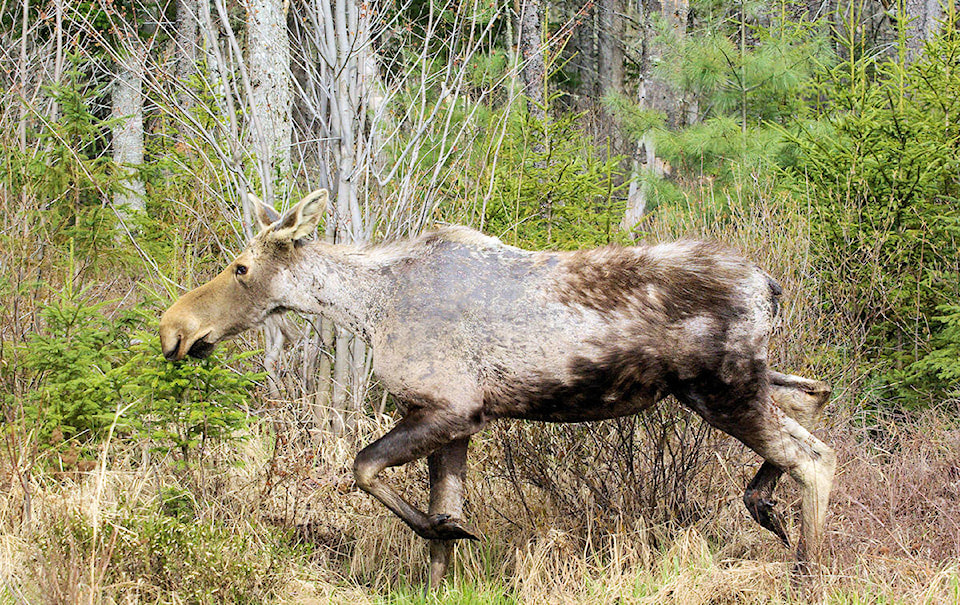Cariboo-Chilcotin residents may have seen some moose since January that appear to have grey or patchy hair or even exposed bloodied skin.
This the result of the moose being infested by ticks.
Winter ticks (Dermacentor albipictus) can have a significant impact on moose populations when climate and habitat conditions promote high tick numbers.
Tick infestations can sometimes result in severe behavioural and physiological changes and directly impact the survival rates of moose – especially for young animals.
This type of tick, which is a single-host parasite and solely targets ungulates, goes through three life stages over the winter on one moose and there can be as many as tens of thousands on one animal, according to wildlife biologists.
Tick larvae climb up vegetation, including trees, in the fall and attach themselves to moose that brush by them.
As the ticks mature, they feed on the animal’s blood, which can cause anaemia.
In late winter, the irritation from ticks gorging themselves on blood cause the moose to scratch up against trees or anything else they can rub up against.
They groom themselves excessively, resulting in hair loss. The more ticks they have feeding off them, the more hair they lose. During this time, they spend less time foraging, which is especially dangerous for younger moose.
Some moose rub almost all of their hair off – hence the moniker ghost moose – and inevitably they succumb to the winter conditions.
The winter tick mates on the moose and they lay eggs on the ground in the spring and these eggs hatch in the summer.
Once established in an area, the only thing that slows the ticks down is if the eggs are laid on snow and ice, or if there is a cold and rainy fall.
If infested moose survive the winter, they have a good chance of survival and will grow a new coat of hair.
If the number of moose drops in an area, the ticks will migrate to wherever the moose are in the wild.
Information needed
The extent of hair loss on a moose can be observed easily from a distance and is a rough indicator of how many ticks are present.
The findings of a new surveillance program will contribute to the Provincial Moose Research Program, which was launched in 2013 to investigate factors influencing moose populations in British Columbia.
Participants are asked to observe and report the amount of hair loss, if any, occurring on moose and check the survey box that most accurately describes the animal’s appearance. There are five categories ranging from no hair loss to more than 80 per cent loss of winter hair.
Anyone interested in contributing to this surveillance program can fill out a survey online or, alternatively, the electronic survey can be saved and completed on your computer, tablet or mobile device and returned via email to FLNRMooseTickSurvey@gov.bc.ca
An online survey, down-loadable survey forms and background information can be found on the moose winter tick program page at www.gov.bc.ca/wildlifehealth/mooseticksurvey
